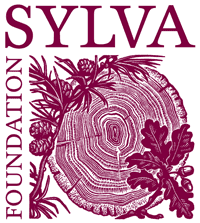The latest research paper arising from work supported under our Oxford-Sylva Graduate Scholarship has been published.
Our scholar Dr Louise Hill, who successfully defended her DPhil thesis earlier this year, researched the ecological consequences of ash dieback disease in Great Britain. The paper is the second peer-reviewed output arising from her work, while one more is in the pipeline which considers the financial impacts of the disease.
Citation:
Hill, L, G Hemery, A Hector, and N Brown. 2018. “Maintaining Ecosystem Properties after Loss of Ash in Great Britain.” Journal of Applied Ecology 00: 1–12. https://doi.org/10.1111/1365-2664.13255.

Abstract
- Acute outbreaks of pests and disease are increasingly affecting tree populations around the world, causing widespread ecological effects. In Britain, ash dieback Hymenoscyphus fraxineus (Baral et al.) has severe impacts on common ash (Fraxinus excelsior L.) populations, and the emerald ash borer (Agrilus planipennis Fairmaire) is likely to add to the impact in future. This will cause significant changes to the character and functioning of many ecosystems. However, the nature of these changes and the best approach for conserving ecosystems after ash loss are not clear.
- We present a method to locate those areas most ecologically vulnerable to loss of a major tree species (common ash) and identify the resultant damage to distinctive ecosystem properties. This method uses the functional traits of species and their distributions to map the potential degree of change in traits across space and recommend management approaches to reduce the change. An analytic hierarchy process is used to score traits according to ecological importance.
- Our results indicate that in some areas of Britain, provision of ash‐associated traits could be reduced by over 50% if all ash is lost. Certain woodland types, and trees outside woodlands, may be especially vulnerable to ash loss. However, compensatory growth by other species could halve this impact in the longer term.
- We offer management guidance for reducing ecosystem vulnerability to ash loss, including recommending appropriate alternative tree species to encourage through planting or management in particular areas and woodland types.
- Synthesis and applications. The method described in this paper allows spatially explicit assessment of species traits to be used in the restoration of ecosystems for the first time. We offer practical recommendations for the ash dieback outbreak in Britain to help conserve functional traits in ecosystems affected by the loss of ash. This technique is widely applicable to a range of restoration and conservation scenarios and represents a step forward in the use of functional traits in conservation.
Related papers:
Hill, L, A Hector, G Hemery, S Smart, M Tanadini, and N Brown. 2017. “Abundance Distributions for Tree Species in Great Britain: A Two-Stage Approach to Modeling Abundance Using Species Distribution Modeling and Random Forest.” Ecology and Evolution 7 (4): 1043–56. https://doi.org/10.1002/ece3.2661.



